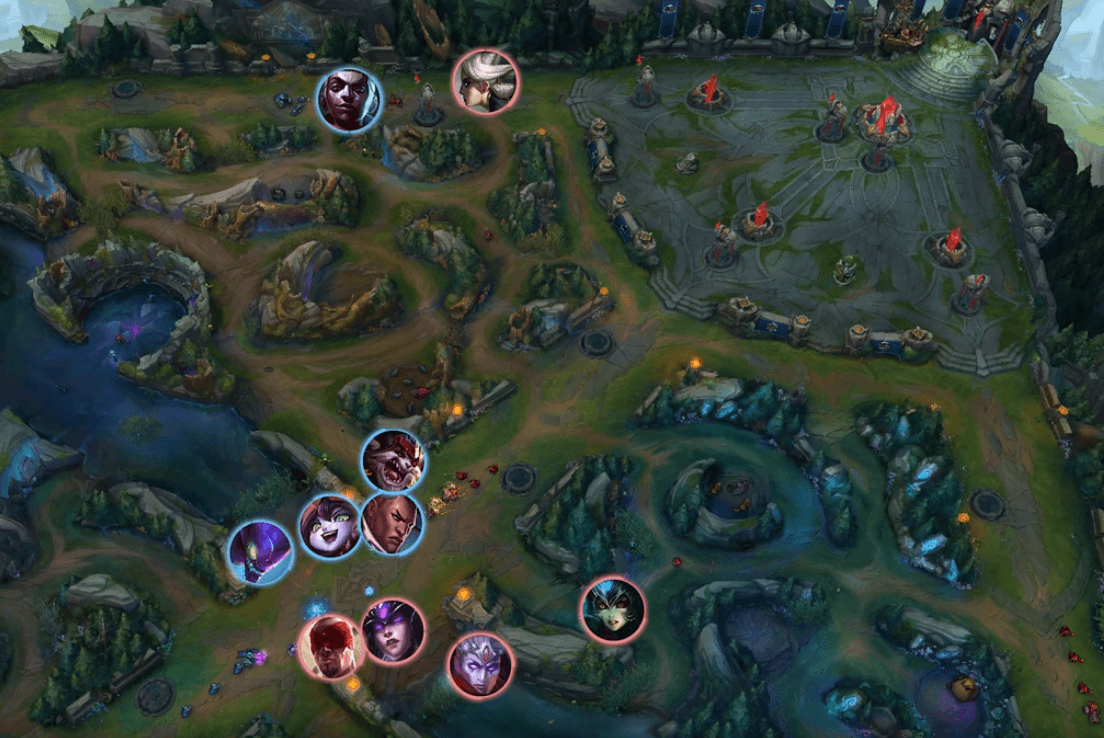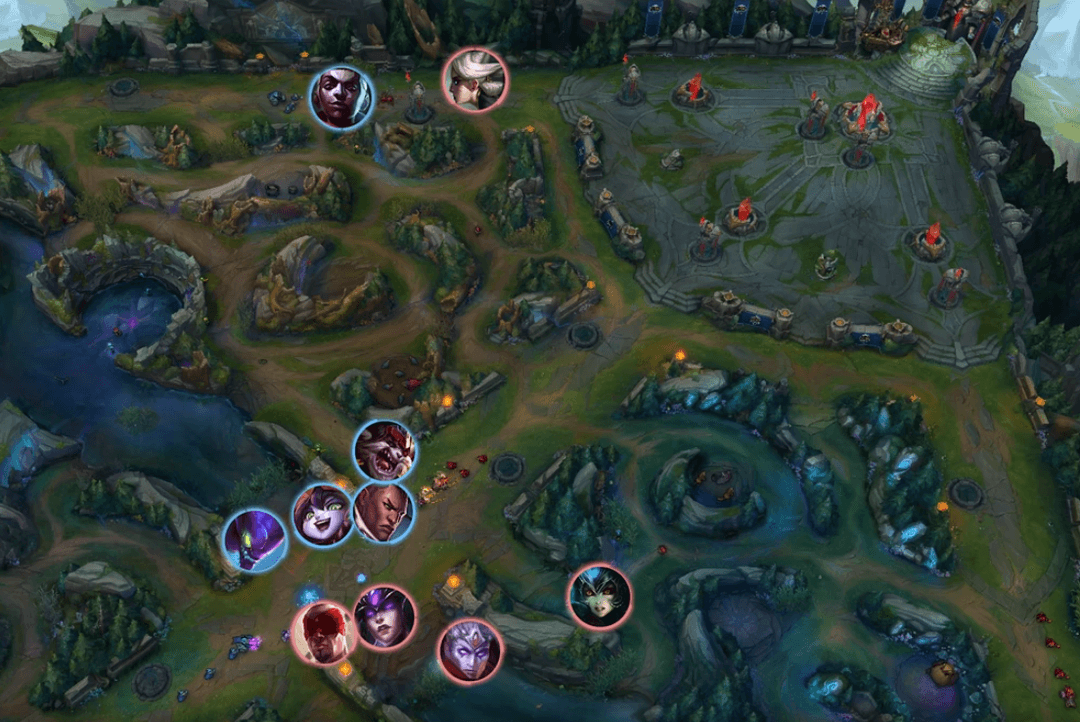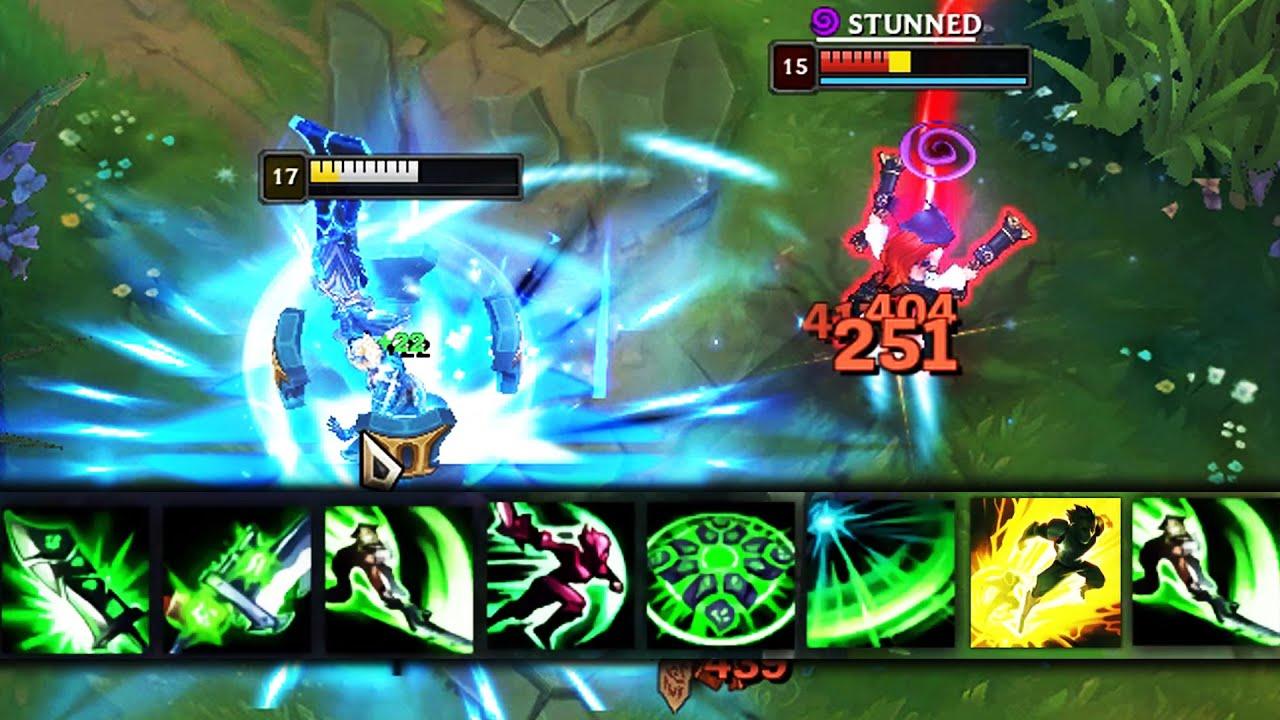


League of Legends is a game of strategy, reflexes, and decision-making, and since its release, players worldwide have been drawn in by wanting to become the best.
However, two concepts are needed to become "the best" which are Micro and Macro.
But what are they?
At a basic level, mechanics define the Micro, whilst the broader strategies involving map control and team coordination represent the Macro.
This guide delves deep into these two crucial elements, directing players to the optimal path to succeed in League of Legends with those two core concepts.
In League of Legends, "micro" refers to the quick decisions and precise actions you take during matches. While these might appear minor initially, they're crucial to securing wins, especially for experienced players.

Micro-management, often shortened to "micro", refers to the individual actions and mechanics players use to control their champion. Micro knowledge is the personal touch you add, the choices you make in the heat of battle, and the skillful outplays that can turn the tide of a skirmish.
Last Hitting: Not merely about gaining exp and gold, last hitting is also about controlling the minion wave. Freeze, slow push, or fast push? Your choices dictate the pace of the lane.
Champion Mechanics: Each champion in LoL has unique abilities. Mastering the mechanics of your chosen champ and knowing the ins and outs of every skill, combo, and interaction is pivotal. It's also necessary to understand situational counter picks and team compositions.
Skillshots Accuracy: Hitting that crucial Thresh hook or dodging that imminent Ashe arrow could mean the difference between a secured kill or a wasted summoner spell.
Zoning: In the laning phase, a support might zone the enemy ADC away from the minion wave, preventing them from last hitting and starving them of exp and cs. Similarly, a top laner or a tank might zone out the enemy's key damage dealers during team fights, ensuring they cannot contribute effectively to the fight. Proper zoning can lead to significant advantages in terms of gold and experience and create opportunities for your team by controlling space during team fights or when securing objectives.
Positioning: Especially crucial for squishy champions or ADCs, being in the right place at the right time ensures you deal damage while staying out of harm's way.
Practice Tools: Create custom games to practice specific skills, like last hitting under the turret or landing skill shots on moving targets.
1v1 Duels: Challenge friends or fellow players to 1v1 matches. It helps improve champion mechanics and teaches you to read and predict opponent moves.
Replays: Make use of the in-game replay system. Watching your games can help you identify and rectify mistakes, especially in heated skirmishes where everything happens too fast.
Macro gameplay transcends the individual—it's about how players operate as a cohesive unit, strategizing to control the map and achieve shared objectives.

In contrast to micro, macro knowledge focuses on team-wide strategies and objectives. While micro decisions may win battles, macro decisions often win the war.
Map Awareness: Keep an eye on the mini-map, track enemy movements, and predict their next move. Did the enemy jungler show on the top side just now? It might be a good time for a dragon attempt.
Objective Control: Dragons, Rift Heralds, Baron Nashor, and Turrets are all objectives that can give significant advantages. Securing or defending these at the right time is a crucial macro play.
Vision Game: Wards win wars. Proper ward placement and vision denial can safeguard against being ganked, secure objectives, and even set up ambushes.
Strategic Rotations: Knowing when to push a lane, rotate for a turret dive, or group up for a team fight can catch the enemy off guard and create pressure points on the map.
Review Your Games: Use the replay feature to analyze VOD reviews of your matches. Focus on your decisions, especially about objectives, and consider alternative strategies or moves.
Watch High Elo and Pro Games: Analyze how professionals play on platforms like Twitch. Notice their ward placements, their rotations, and their objective focus.
Practice with Purpose: When you play, set macro-related goals for yourself. For example, if you're a jungler, focus on objective control for a set of games, tracking your progress and improvement.
Communicate: In a game like League of Legends, communication is key. Effective communication can significantly uplift the team's macro play, whether pinging missing enemies or discussing strategies in chat.
Simulate Scenarios: Discuss hypothetical situations with friends or teammates. What would you do if the enemy team secured the first three dragons? How would you respond to a split-push strategy?
Engage in Constructive Discussions: Join League of Legends communities or forums and engage in macro-related discussions. Sharing and debating strategies help crystallize your understanding.
League of Legends boasts five distinct roles, each with unique macro responsibilities. Understanding the nuances of each role's macro-game is paramount for consistent in-game excellence.

Split-Pushing: The art of split-pushing is often in the top laner's domain. It's essential to gauge when to exert pressure in a side lane while the team handles engagements elsewhere.
Teleport Usage: The effective use of the Teleport summoner spell can dramatically alter the course of teamfighting, especially during dragon or Baron confrontations. Sometimes, it helps your team win the game from there.

Objective Control: The responsibility of securing prime objectives like dragons, Rift Heralds, and Baron Nashor often falls on the jungler. Discerning when to initiate or contest these objectives becomes central.
Map Pressure: Prolific junglers maintain dynamic jungle pathing. They invade the other side of the map during a buff reset, scout ganking prospects, and anticipate the adversary jungler's positions based on Jungler vision control and other factors.

Roaming: Mid laners hold the privilege of roaming around the map. Discerning optimal moments to shove the lane and roam can provide indispensable support to adjacent lanes.
Vision Control in River: Orchestrating vision around the pivotal river area can act as a guard against ambushes and offer intel on rival rotations.

Objective Damage: ADCs, with their scaling damage, play a pivotal role in quickly taking down objectives like dragons, turrets, and Barons.
Positioning in Teamfights: The success of skirmishes often hinges on the ADC's positioning, ensuring they deliver consistent damage while staying shielded from threats.

Vision and Warding: A support's primary duty revolves around orchestrating vision—warding objectives, setting up vision for upcoming plays, and clearing enemy vision.
Peeling and Engaging: Supports must gauge when to peel for their ADC, initiate engagements with cc, or roam out of bot lane to help other teammates. Their decisions can dictate the rhythm of many team conflicts.
As distinct as they seem, micro and macro are two sides of the same coin. Your champion mechanics (micro) will determine if you can secure that game-changing objective (macro) in a high-pressure situation.
Balancing is key. It's not uncommon to see players with impeccable mechanics but poor decision-making or strategic geniuses who falter in 1v1 situations. The goal? Harmonize both.
Coaches see the game from a unique vantage point. They recognize that a player's phenomenal reaction times can be amplified with strategic knowledge. Conversely, a strategic mind can achieve more with polished mechanics.
Insights from our coaches often stress the importance of building a solid foundational understanding of both. A balanced training regimen, combined with feedback, can drastically improve gameplay.
Both micro and macro play in League of Legends have their pitfalls. Even experienced players can sometimes stumble. Recognizing and avoiding these common mistakes can significantly improve your gameplay.
Players can avoid these common mistakes with awareness, practice, and proper game knowledge. Being mindful of these pitfalls is often the first step to improving your overall gameplay.
True mastery in League of Legends isn't about being the best in one aspect. It's about joining macro and micro into a powerful blend of gameplay. It's about evolving and taking feedback, learning from every game, and continuously pushing the boundaries of what you believe is possible.
Think of playing League of Legends as navigating a vast ocean of strategies. Both big-picture tactics and split-second choices play a role. By sharpening your micro and macro abilities, you'll play more effectively.